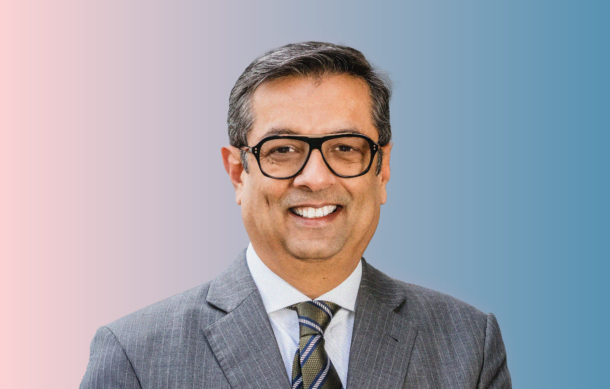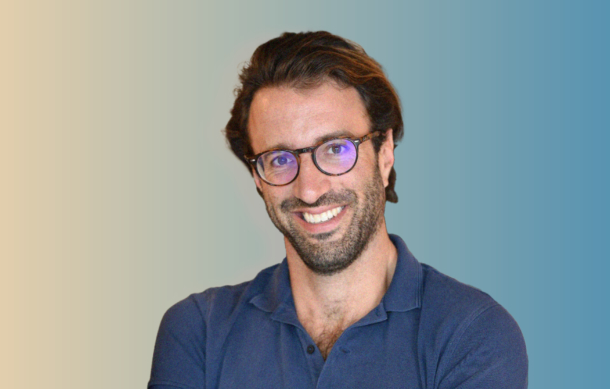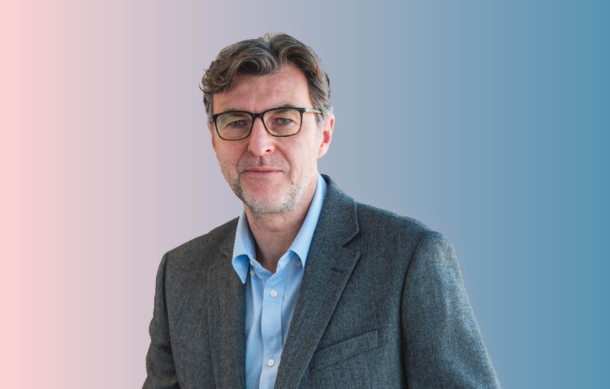
In this roundtable, four medical affairs experts share what’s actually working (and what isn’t) in 2025. Discover how to cut through the noise and truly reach today’s time-starved HCPs
Interview by Isabel O’Brien
Contributors:
- Dr Donatello Crocetta, Chief Medical Officer, UCB
- Dr Natalia Barkalina, UK Medical Director, Syneos Health
- Bora Erdemli, Principal, ZS
- Cécile Janssenswillen, Global Medical Communication and Education Lead, Bayer.
What’s a new thing that’s made engaging HCPs harder this year, and how are you dealing with it?
Crocetta:
This year, the challenge has been communicating the growing complexity of evidence in an environment where clinical bandwidth is shrinking. Physicians are navigating more therapeutic options per condition, more nuanced data and rising expectations from patients and healthcare systems. Medical affairs must adapt, ensuring efforts are not only scientifically sound but genuinely usable. To achieve that, our teams are focusing on three key areas: co-creating evidence with HCPs and patients, so it reflects lived experience and real-world decision-making; designing protocols that fit into clinical workflows; and investing in tools that speed up data-sharing. To earn attention and trust, we need to meet HCPs where they are.
Barkalina:
There’s ever-growing competition for HCPs’ time, as clinical responsibilities and administrative burden increase. The choice of educational content HCPs can now access in their limited professional development time is unlike anything we’ve seen before. However, we know HCPs engage with information that is highly credible and directly relevant to their daily challenges. These principles are our guiding light: we take time to understand our audience and respond with solution-focused content that has scientific integrity, validation from external experts, creative precision and is timely and accessible. We now do far less didactic self-directed e-learning, favouring high-impact, scenario-based formats rooted in clinical realities.
Erdemli:
This isn’t a new hurdle but a key one – digital fatigue and content overload which has been amplified with the AI + GenAI revolution. We have more channels and content than ever, but many HCPs are tuning out. Over 60% report feeling overwhelmed by engagement volume. It’s not just the amount, but also the lack of relevant content and meaningful interaction. HCPs have become extremely selective, spending less time on generic hour-long webinars. Most organisations are addressing this by sharpening relevance and brevity – delivering shorter, high-yield learning bites on demand.
Janssenswillen:
Many have highlighted digital or screen fatigue, combined with an abundance of digital educational content from many sources, making it harder to engage HCPs through digital channels. To overcome this, we are engaging HCPs on multiple fronts, changing activities at conferences and events and providing interactive learning experiences (e.g., simulators, VR glasses, Menovest). When developing digital content, we work with expert clinicians to create bitesize, patient-centric, clinically relevant, practice-based knowledge.
Medical affairs must adapt, ensuring efforts are not only scientifically sound but genuinely usable
Have you noticed a gap between what HCPs say they want, and what actually grabs their attention?
Crocetta:
Throughout my 25 years in healthcare and as a physician, the first thing we always ask for is more data, as that lies at the heart of decision-making. However, with limited time and clinical complexity, it’s critical that we communicate data in a way that’s practical for HCPs with patients in front of them – considering comorbidities, disease management variability and patients’ priorities. We address this by designing studies that integrate real-world elements from the start and co-creating endpoints with HCPs that matter to them. The takeaway: listen to what HCPs say, but study what helps them act.
Barkalina:
Yes, there is a gap. HCPs often ask for data, but what really grabs their attention is when we zoom out to real-world impact stories or system-level implications. The detail matters, but only when it supports something bigger that they care about. We’re shifting from ‘what we think they should know’ to ‘what helps them see the potential,’ which creates more meaningful engagement.
Erdemli:
Absolutely. The industry has made great progress in terms of listening to customers, but we don’t always act on what they tell us. HCPs consistently say they want unbiased, educational content – surveys show 60–80% prefer educational to promotional material, and 80% value independent, credible sources over pharma channels – yet pharma often leads with brand-centric messaging, which HCPs largely tune out. Listening to HCPs’ stated desires for scientific depth, neutrality and personalisation and observing their actual engagement behaviour, should help us close the gap – if we’re brave enough to act on it.
Janssenswillen:
HCPs often mention wanting to learn more about topics that interest them and can help them provide better patient care. Despite this, they lack the time to engage with longer-form educational content as they try to balance administrative and clinical pressures. Their engagement with short-form content such as infographics, under-five-minute videos and plain language summaries is higher than with other content types. We are honoured to partner with a multidisciplinary group of global experts called the Women’s Health Academy. Through this partnership, we work to better understand educational needs and collectively develop content that gives HCPs the tools they need to improve care for women.
The industry has made progress listening, but we aren’t always good at acting on what customers tell us
What’s one thing you’ve tried recently that really worked, and why do you think it clicked with HCPs?
Crocetta:
The HIDRACENSUS 7.3 programme has been a standout initiative, designed to address the 7.3-year average delay to diagnosis in hidradenitis suppurativa (HS). We collaborated with professionals from every step of the patient journey – dermatologists, GPs, nurses, emergency physicians, OB-GYNs and patients – to illuminate every dimension of HS care. The programme was built around real multidisciplinary needs, informed directly by these stakeholders. Outputs like smart guides and case-based webinars are now helping HCPs recognise HS earlier, potentially within the “window of opportunity” for intervention, and define best practices. The key to success was partnering with HCPs at every step of the evidence generation process and considering the patient journey.
Barkalina:
‘Scrollytelling’ has worked especially well for longform stories, transforming them into an interactive experience. For complex immunology pathways, it allowed us to build understanding by introducing elements sequentially, maintaining cognitive load at appropriate levels. We integrated micro-interactions that let HCPs explore specific molecules or mechanisms without disrupting the narrative flow. This approach respected HCPs’ time while delivering complex scientific content in digestible segments.
Erdemli:
One initiative that yielded great results was the launch of on-demand microlearning modules for HCPs, replacing traditional hour-long webinars with bite-sized video case studies (5–10 minutes, available anytime). The response was remarkable – live attendance and content completion rates jumped. HCPs felt this approach respected their time and delivered value quickly, fitting learning into breaks between patients. The content was optimised for mobile, recognising that over half of HCPs engage via mobile during the workday. This reinforced that “less is more”: concise, relevant education in a well-designed user experience can dramatically boost engagement.
Janssenswillen:
We have found more traditional types of engagement have been really valued by HCPs recently. In face-to-face meetings, we have mixed up PowerPoint presentations with workmat and flip-chart sessions, and HCPs have enjoyed getting away from the screen. Hard-copy content such as infographics and opinion pieces from topic experts have also been well received at conferences. Our ‘meet-the-expert’ sessions are becoming ever more popular, addressing HCP needs in their day-to-day practice. We are also working in partnership with women and the wider medical community to understand what is needed to support an individualised approach to care for women, particularly at midlife.
‘Scrollytelling’ has worked especially well for longform stories, transforming them into an interactive experience
If you had to prove that your HCP engagement is working, what’s the one metric you’d show – and why?
Crocetta:
For me, the most meaningful metric is behaviour change. Beyond informing clinical guidelines, our work should shape care pathways and real-world patient outcomes. Are our materials informing practice? Are they influencing diagnosis or therapy initiation? Are our efforts driving systemic change, shaping policy and improving access to care? My advice: partner with your field teams, market access teams and real-world evidence colleagues to monitor referral patterns, time-to-diagnosis and time to treatment initiation – these are leading indicators of meaningful patient outcomes.
Barkalina:
In the short term, advocacy – meaning our communication was relevant, messages are recalled and trust and behaviour change are driven. In the long term, I look for bottom-up calls for policy change to bring equitable health outcomes. That’s the most important thing evidence can do: create an environment of respect, compassion and shared decision-making. It’s a long game, but worth playing.
Erdemli:
Metrics that demonstrate real-world impact – specifically, HCP behaviour change resulting from our engagement, such as an uptick in appropriate treatment utilisation among engaged HCPs. The appropriate metrics must be considered in light of compliance and legal guardrails, particularly in medical affairs. However, this kind of metric is powerful: it translates engagement into tangible results. It shows leadership that engagement isn’t just about clicks or attendance, but about driving more patients to get the right therapy. Demonstrated behaviour change – improved guideline adherence, higher treatment initiation, or other positive clinical actions – is the ultimate proof of a successful strategy.
Janssenswillen:
While not a typical metric, we note that when HCPs are engaged with a topic, they are curious and want to know more. Therefore, I would suggest looking at the volume of questions received across multiple channels. Growing awareness of the condition, unmet needs and the product can all be measured based on the interest, conversations and questions asked during or after symposia, at conference booths, through medical information, or during casual conversations.
When HCPs are engaged with a topic, they are curious and want to know more








